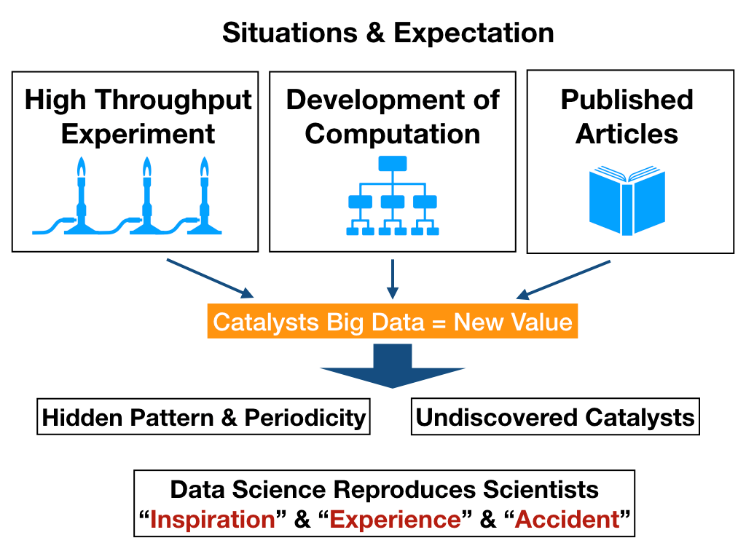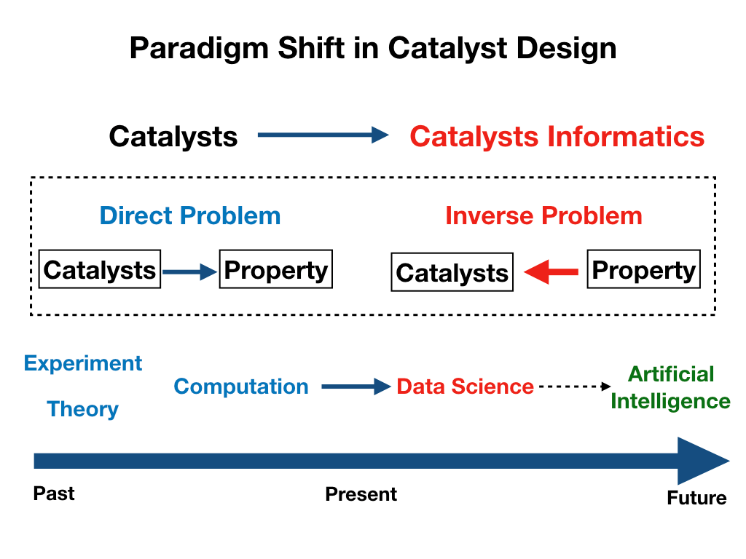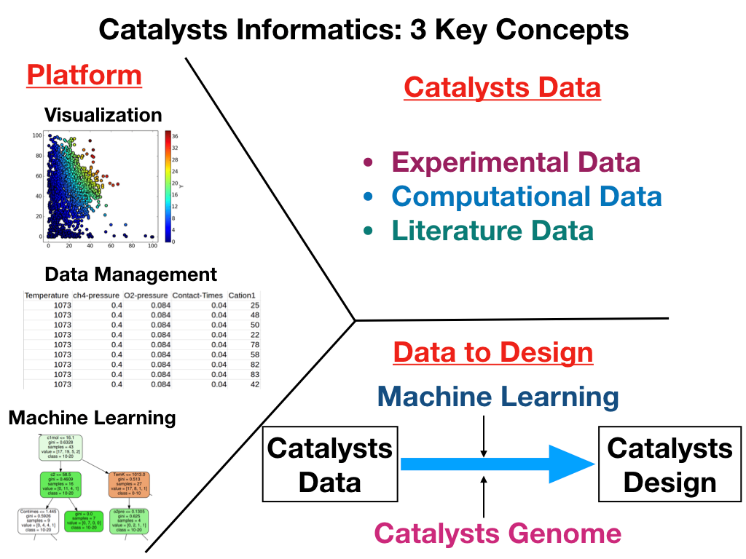Catalysts Informatics
What is Catalysts Informatics?
Catalysis research is on the verge of experiencing a paradigm shift regarding how catalysts are explored and designed.

Catalysis as a field of research first emerged from experimental and theoretical sciences. As illustrated, computational science is gradually introduced to and established within catalyst research, where density functional theory is a major contributor. For both types of approaches, researchers must actively carry out catalyst design based on previous work and personal experiences. This process of designing and testing through hypothesis validation must be repeated until the desired catalysts are discovered. This type of approach is considered to be an investigation of the direct problem, regardless of whether the approach taken is experimental or computational in nature.
An ultimate goal of catalyst informatics is to enable the prediction and design of a catalyst on a desired reaction. This type of problem-solving is considered to be an inverse problem, where catalysts can be predicted from a particular property such as reaction, structure, or reaction mechanism.

Three Key Concepts in Catalysts Informatics

Proposed workflow for catalyst informatics are illustrated. More specifically, the following three components are proposed to be integral to catalyst informatics: (a) catalyst data, (b) transformation of catalyst data to catalyst design using data science, and (c) catalyst platform. One can thus consider that these points must work synergistically in order to utilize the full potential of catalyst informatics.
ⒸTakahashi, et. al The Rise of Catalyst Informatics: Towards Catalyst Genomics. ChemCatChem. (2019) doi:10.1002/cctc.201801956
Research
Catalyst informatics is proposed through the integration of experimental, computational, and data sciences with the objectives of discovering novel, innovative catalysts and elucidating the catalytic reaction mechanisms. Hence, the project goals are defined as the following:
- Discovering novel catalysts & Optimizing the experimental conditions
- Revealing and controlling the reaction mechanisms
In particular, catalysts for methane conversion towards useful chemicals and energies are investigated using catalysts informatics. The research is executed through the following three pillars:
- Catalyst database construction
- Transformation of data to knowledge through machine learning
- Catalysts informatics platform design
The project has an additional goal which is aimed to move the field of catalysts from ‘catalyst science’ to ‘catalyst informatics’
Four groups are formed in order to carry out the project and are responsible for various aspects of the research project.
High-Throughput Calculations & Data Science Group (Takahashi Group)
- Development of high-throughput calculations system
- Discovery of novel catalysts using machine learning
- Development of catalysts informatics platform
Data Science & Reaction Mechanism Group (Uno Group)
- Generating the reaction path network map using GRRM
- Understanding the reaction path network using Path enumeration model
Catalysts Synthesis & Characterization Group (Ohyama Group)
- Synthesis of discovered catalysts
- Catalysts characterization
High-Throughput Experiment & Multivariate Analysis Group (Taniike Group)
- Development of high-throughput catalyst characterization system
- Multivariate analysis


